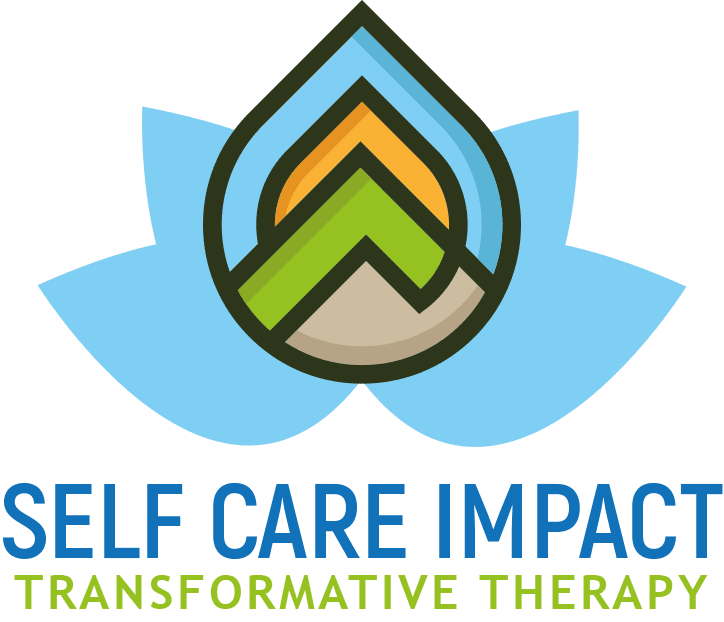Dealing with sudden and overwhelming episodes of intense fear or discomfort, known as panic attacks, can be incredibly challenging. They can be caused by a variety of factors, including genetics, stress, certain medical conditions, or significant life changes. These attacks can occur without warning, triggering a variety of physical symptoms such as a racing heart, breathlessness, or dizziness. However, knowing how to manage panic attacks when they occur and taking steps to reduce their frequency can significantly improve your quality of life. Using some techniques for grounding yourself can help reduce the impact and frequency of panic attacks.
Grounding Tips for Managing Panic Attacks
Panic attacks can be distressing experiences, but there are many ways to manage and mitigate their impact. Here are some tips that might help:
5-4-3-2-1 Grounding Technique:
The 5-4-3-2-1 grounding technique is a popular cognitive behavioral therapy (CBT) method used to help individuals manage and reduce symptoms of anxiety and panic attacks. This technique engages your five senses to help distract you from distressing feelings, anchor you in the present moment, and reduce feelings of panic. Here’s how you can use it:
5 – Look around for five things that you can see, and say them out loud.
For example, “I see the chair, I see the table, I see the picture on the wall, I see my shoes, I see my hands.”
4 – Feel four things that you can touch around you
Maybe this is your hair, hands, the ground under your feet, or the pillow you are sitting on.
3 – Listen for three sounds
This could be the sound of traffic outside, the sound of typing or the quietness around you.
2 – Smell two things
Maybe you can smell flowers, coffee, or the smell of a book. If you can’t find anything to smell, you can also think of your two favorite smells.
1 – Taste one thing
What does the inside of your mouth taste like, gum, coffee, or the sandwich you just ate? If you can’t taste anything, think of your favorite taste.
This method works by grounding you in the present and helps to refocus your attention away from your internal, subjective experience and towards the external, objective world around you. It’s an example of mindfulness, which can often help reduce feelings of panic or anxiety.
Picture a Happy Place
Picturing a “happy place” or using other forms of visualization can indeed help with panic attacks for some people. This strategy is part of a broader group of cognitive behavioral techniques often used to manage and reduce the symptoms of panic attacks and other forms of anxiety. Here’s why it can be effective:
- Distraction: By focusing on a pleasant, calming scene or place, you can help divert your mind from the source of the panic attack.
- Relaxation: Visualizing a peaceful place can help induce feelings of relaxation and tranquility, counteracting the physiological symptoms of a panic attack, such as rapid heart rate and hyperventilation.
- Positive Association: If you consistently practice visualizing a “happy place” during moments of calm and relaxation, you can develop a strong positive association with this place. Then, when you’re feeling anxious, visualizing this place can trigger feelings of calm and safety.
Other Techniques that can Help
Deep Breathing
During a panic attack, your breathing can become quick and shallow, which may increase feelings of fear and anxiety. Deep breathing can help to slow your heart rate and relax your body. Try to breathe in for a count of four, hold for a count of four, then breathe out for a count of four.
Progressive Muscle Relaxation
This technique involves tensing and then releasing different muscle groups in your body, starting from your toes and working your way up to your head. This can help to relieve tension and promote relaxation.
Regular Exercise
Regular physical exercise can help manage panic attacks. Exercise releases endorphins, the body’s natural mood lifters, and can also help regulate your sleep patterns – poor sleep being a common trigger for panic attacks. Even simple activities like walking or yoga can be beneficial. It’s recommended that you aim for at least 30 minutes of moderate-intensity exercise most days of the week, but any amount of physical activity is better than none.
Healthy Diet
Diet and lifestyle can also play a pivotal role in managing panic attacks. Avoiding stimulants such as caffeine and alcohol, which can trigger or exacerbate panic attacks in some people, is often advisable. A balanced diet, rich in fruits, vegetables, lean proteins, and whole grains, can help keep your body functioning optimally and reduce anxiety.
Mindfulness and Meditation
These practices can help to reduce anxiety and promote a sense of calm. They involve focusing on your breath and being consciously aware of the present moment without judgment.
CBT Can Reduce Panic Attacks
If panic attacks are significantly affecting your quality of life, it might be beneficial to seek professional help. Cognitive-behavioral therapy (CBT) is widely recognized as an effective treatment for panic attacks and panic disorder. It works by helping individuals understand and change thought patterns that lead to fearful and distressing feelings.
CBT is based on the idea that our thoughts (cognition) and actions (behavior) interact and influence each other significantly. When it comes to panic attacks, certain thought patterns may trigger intense fear or discomfort, leading to physical symptoms like rapid heart rate, shortness of breath, or dizziness.
For treating panic disorder, CBT generally involves two main components: cognitive therapy and exposure therapy.
Cognitive Therapy
Cognitive therapy focuses on identifying, challenging, and ultimately changing the distorted thoughts and unrealistic beliefs that can lead to panic attacks. For example, during a panic attack, a person might think, “I’m having a heart attack” or “I’m going to lose control.” These thoughts can intensify the panic attack and perpetuate a cycle of fear and anxiety. Cognitive therapy helps people to challenge these thoughts and replace them with more accurate and less catastrophic interpretations.
Exposure Therapy
Exposure therapy, the other component of CBT, involves exposing the individual to the physical sensations of panic in a safe and controlled environment. The purpose of this is to help the individual become less afraid of these sensations and to understand that they are not harmful. For instance, a therapist might ask a patient to run on the spot to trigger sensations like rapid heart rate and shortness of breath. Over time, repeated exposure can help to reduce the fear response to these sensations, helping to break the cycle of panic.
Through these techniques, CBT aims to give individuals a greater sense of control over their thoughts and reactions, enabling them to manage their panic symptoms more effectively. It’s worth noting that the effectiveness of CBT often depends on the individual’s commitment to the process and the skill of the therapist. It’s also often most effective when combined with other strategies like medication, lifestyle changes, and other forms of therapy.
Panic Attack Counseling Help in the Denver Area
While panic attacks can be frightening and disruptive, there are several effective strategies to manage and overcome them. Grounding techniques, regular exercise, a healthy diet, mindfulness practices, and professional help can all contribute to a reduction in both the frequency and severity of panic attacks. The key is to remember that help is available, and with the right support and techniques, you can navigate your way through this challenge.
Let’s figure out what triggers your anxiety and find some mindful methods that help you deal with life in a non-anxious, healthy manner. Please contact our Client Care Coordinator for your complimentary 20-minute phone consultation today and read more on the Anxiety Page on our website.
Self Care Impact Counseling envisions a new age of counseling for adolescents, adults, couples & groups that makes a REAL difference with core values of GROWTH | BALANCE | COMPASSION | INNER HARMONY.

